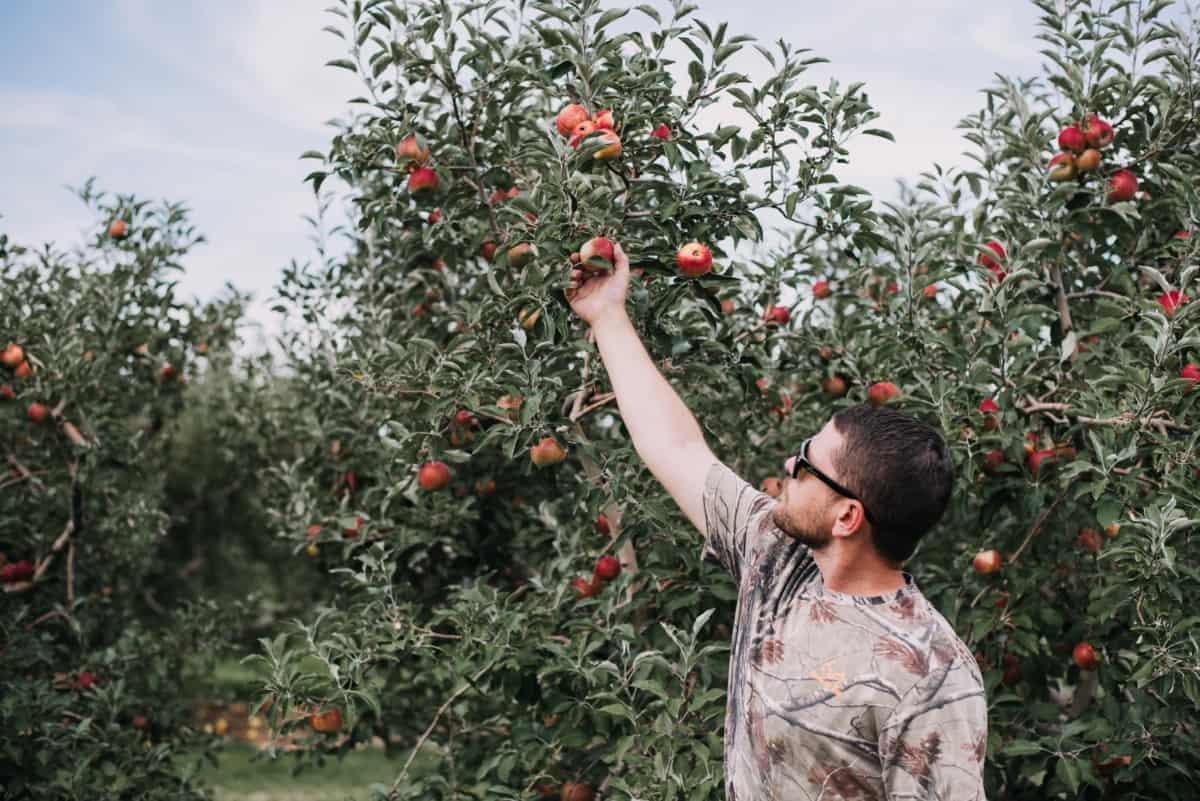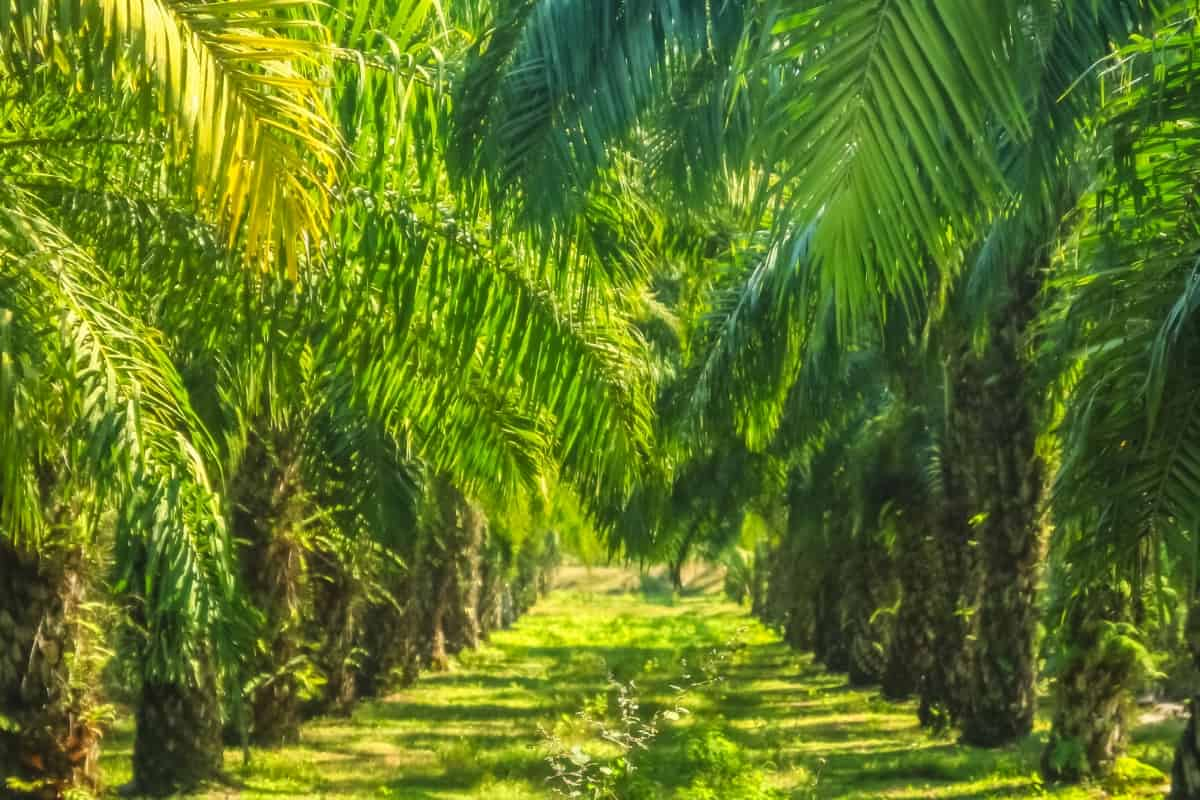High-Density Plantation (HDP) is an innovative method in agriculture that capitalizes on using smaller-sized, densely-packed plants to maximize crop output. It revolutionizes traditional farming practices, where larger-sized plants are spaced further apart. The start of HDP was motivated by the need for increased yield per unit area, effective utilization of resources, and maintaining the ecological balance.

High-Density Plantation
Optimal Spacing for High-Density Plantation
Optimal spacing is the most critical factor in the success of a High-Density Plantation. This refers to the appropriate distance between two plants, allowing each plant enough space for growth, nutrient absorption, sunlight penetration, and air circulation. Determining the optimal spacing is contingent on the crop type, the plant variety, and its growth habit.
For instance, apple trees in an HDP system might be spaced as close as 3-4 feet apart, while mango trees would require more space, perhaps 10 feet or more. It is essential to understand that achieving optimal spacing is a balance. If plants are too close together, they might compete for resources, leading to reduced yield. Insufficient space between the land and its surroundings could hinder the land’s optimum productivity.
High-Density Plantation Advantages/Benefits
HDP presents several benefits, chief among them being increased yield per unit area. By planting more trees in a given space, farmers can maximize the productive potential of their land. Another advantage of HDP is that smaller trees are easier to manage. Pruning, spraying, and harvesting can all be done without specialized equipment or labor, reducing costs and risks.
The smaller trees in HDP also mature more quickly than larger ones, meaning they can start producing fruit sooner. Furthermore, because the trees are planted closely together, they can create a microclimate that can benefit growth. For instance, the close spacing can reduce soil evaporation, maintaining soil moisture and reducing the need for irrigation.
High-Density Plantation Techniques
Several techniques can be employed to achieve a successful High-Density Plantation. First and foremost, the right selection of crop variety is essential. Dwarf or semi-dwarf varieties are usually preferred as they grow smaller and are easier to manage. Second, proper soil preparation before planting is critical. This involves tilling the soil, adding organic matter, and ensuring good drainage.
Third, planting must be done correctly. This involves digging a hole of the appropriate size, positioning the plant correctly, and backfilling with soil. Finally, after planting, proper care must be taken of the trees. This includes regular pruning to maintain the size and shape of the trees, appropriate fertilization to provide the necessary nutrients, and regular irrigation to ensure sufficient water supply.
Best Crops for High-Density Plantation
While HDP can potentially be used for many crops, it is best suited for fruit trees, particularly those that can be pruned to control their size. Various fruits such as apples, peaches, cherries, pears, mangoes, and bananas have proven to thrive when cultivated through High-Density Planting (HDP) techniques. Note that the prosperity of these crops within an HDP system relies on careful selection of suitable varieties, diligent soil maintenance, adequate water supply, and efficient management of pests and diseases.
In case you missed it: Effective Strategies for Millet Disease Prevention, Treatment, and Control

Plants Per Acre in High-Density Plantation
The number of plants per acre in an HDP system varies widely depending on the type of crop and the spacing used. For example, in an apple orchard with trees spaced 3 feet apart in rows 12 feet apart, you could plant about 1,210 trees per acre. On the other hand, a mango orchard with trees spaced 10 feet apart in rows 12 feet apart could only accommodate about 363 trees per acre. Again, it’s essential to consider each crop’s specific growth habits and requirements when determining the optimal number of plants per acre.
Managing Pests and Diseases in High-Density Plantations
In a high-density plantation, managing pests and diseases becomes even more important due to the proximity of the plants. Regular monitoring for signs of pests and diseases is crucial, and preventive measures such as using resistant varieties and proper sanitation practices can be very helpful.
In case of an outbreak, targeted, environmentally-friendly pesticides may be necessary. Biological control methods, such as beneficial insects or microorganisms, can also be very effective. Integrated Pest Management (IPM) strategies, which combine various pest and disease control methods, are generally the most successful in an HDP setting.
High-Density Plantation Vs. Traditional Farming: a Comparative Analysis
In traditional farming, fewer, larger plants are grown, requiring more space between plants. This allows for easier management but also means that the yield per unit area is lower. In contrast, high-density plantation allows for a higher yield per unit area by growing more, smaller plants.
However, this also means that the plants are closer together, making them more susceptible to pests and diseases and requiring more intensive management. While traditional farming methods may be less labor-intensive, HDP can offer greater returns on investment due to the higher yields.
The Economic Viability of High-Density Plantation in Cash Crops
The economic viability of high-density plantations in cash crops is generally high due to the potential for increased yield per unit area. However, the initial investment for setting up an HDP system can be higher than for traditional farming due to the cost of more plants and potentially more intensive soil preparation.
Over time, however, the higher yields can offset these initial costs. Furthermore, because smaller trees are easier to manage and can be harvested sooner, labor and harvest costs can be lower in an HDP system. In general, for crops like apples, mangoes, or cherries, the economic viability of HDP is quite high.
Yield in High-Density Plantation
Yield in a high-density plantation is typically higher per unit area than in traditional farming. The increased plant density accounts for the higher quantity of plants cultivated within a limited area. Acknowledge that the final harvest output may vary due to multiple factors, including the type and variety of crops, soil condition, water accessibility, and the effectiveness of pest and disease management. With proper management, yields in an HDP system can be several times higher than in traditional farming.
In case you missed it: Millet Pest Control: Best Practices and Strategies

High-Density Plantation Disadvantages
While the benefits of high-density plantations are numerous, there are also some disadvantages. For instance, the proximity of plants can make them more susceptible to the spread of pests and diseases. Additionally, HDP requires more intensive management than traditional farming, which can be labor-intensive. Finally, the initial investment for setting up an HDP system can be higher than for traditional farming. Despite these challenges, with the proper knowledge and management, the high-density plantation can be a very effective and profitable farming method.
- Ultimate Guide to Ossabaw Island Hog: Breeding, Raising, Diet, and Care
- Ultimate Guide to Juliana Pig: Raising Facts, Size, Diet, Care, and Lifespan
- Raising Lleyn Sheep: Disadvantages, Price, Uses, Characteristics, and Care
- Ultimate Guide to Meishan Pig: Breed Facts, Breeding, Raising, and Care
- Ultimate Guide to Teacup Pigs: Raising, Diet, Lifespan, Cost, and Care
- Guide to Raising Poll Dorset Sheep: Facts, Profile, Characteristics, Uses, and Care
- Ultimate Guide to Bighorn Sheep: Characteristics, Diet, Lifespan, Breeding, and Lifecycle
- Ultimate Guide to Raising Katahdin Sheep: Farming Facts, Breed Profile, Uses, and Care
- Ultimate Guide to Raising Oreo Cows: Belted Galloways Farming Facts, Profile, Uses, and Care